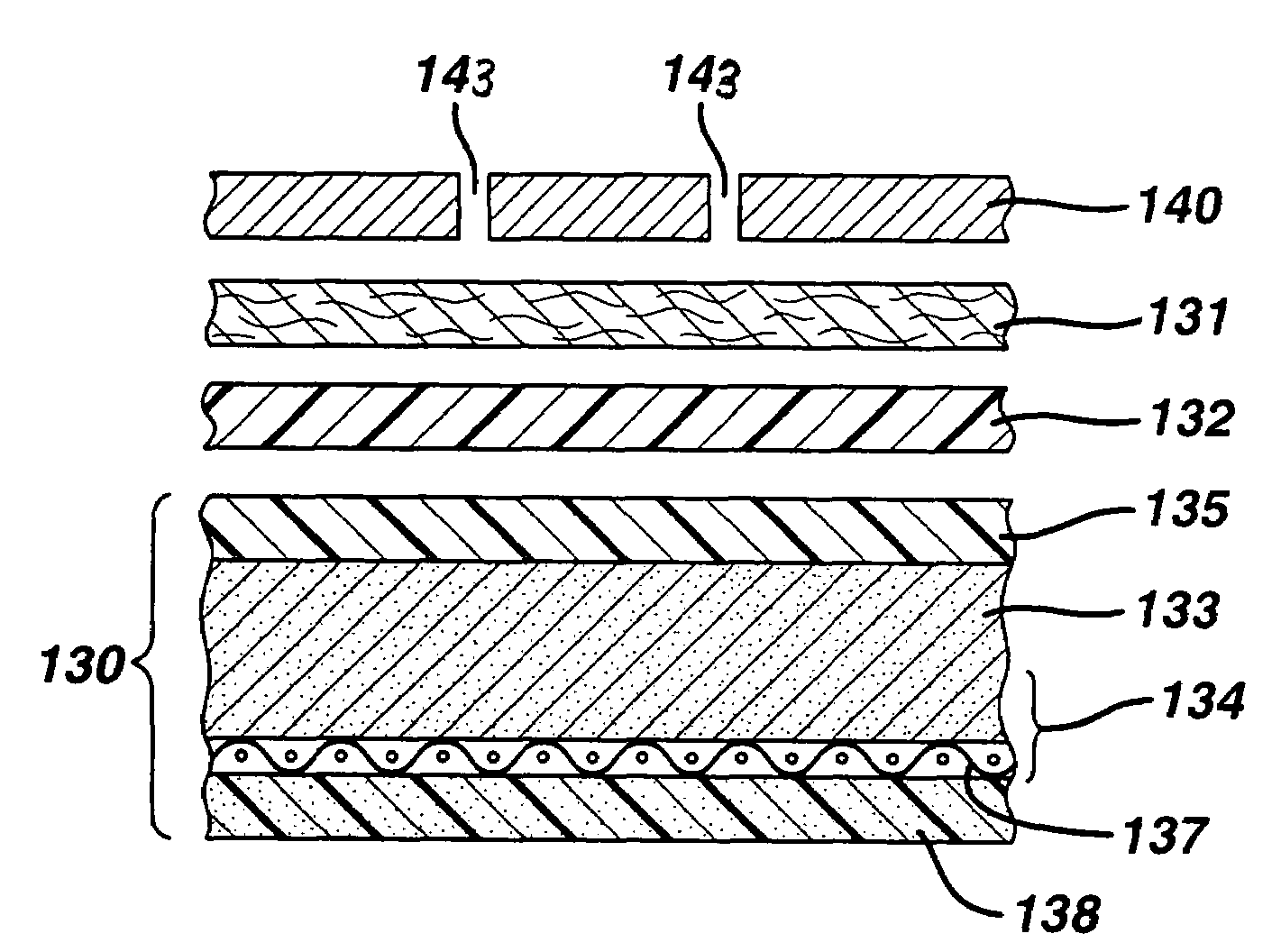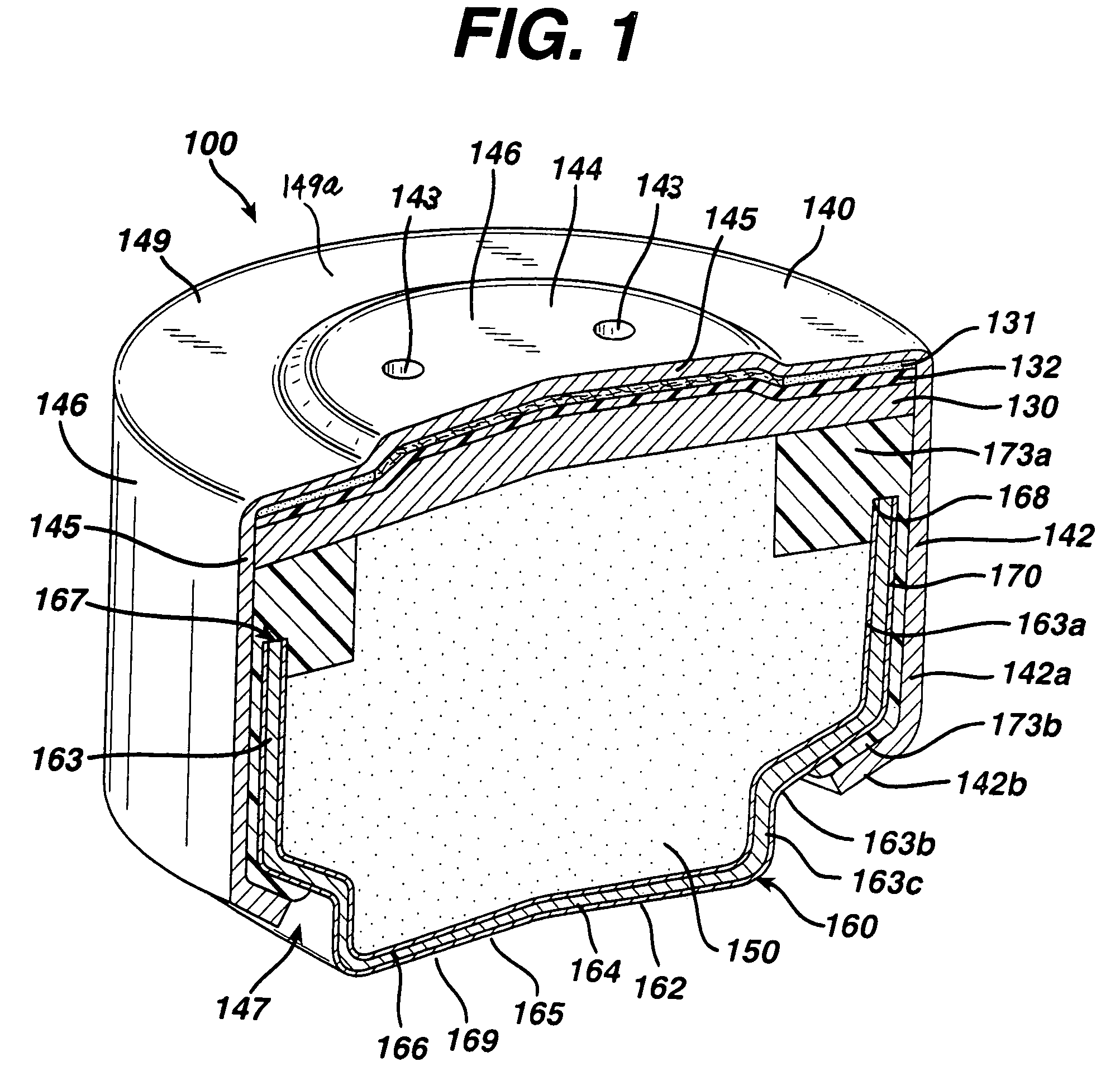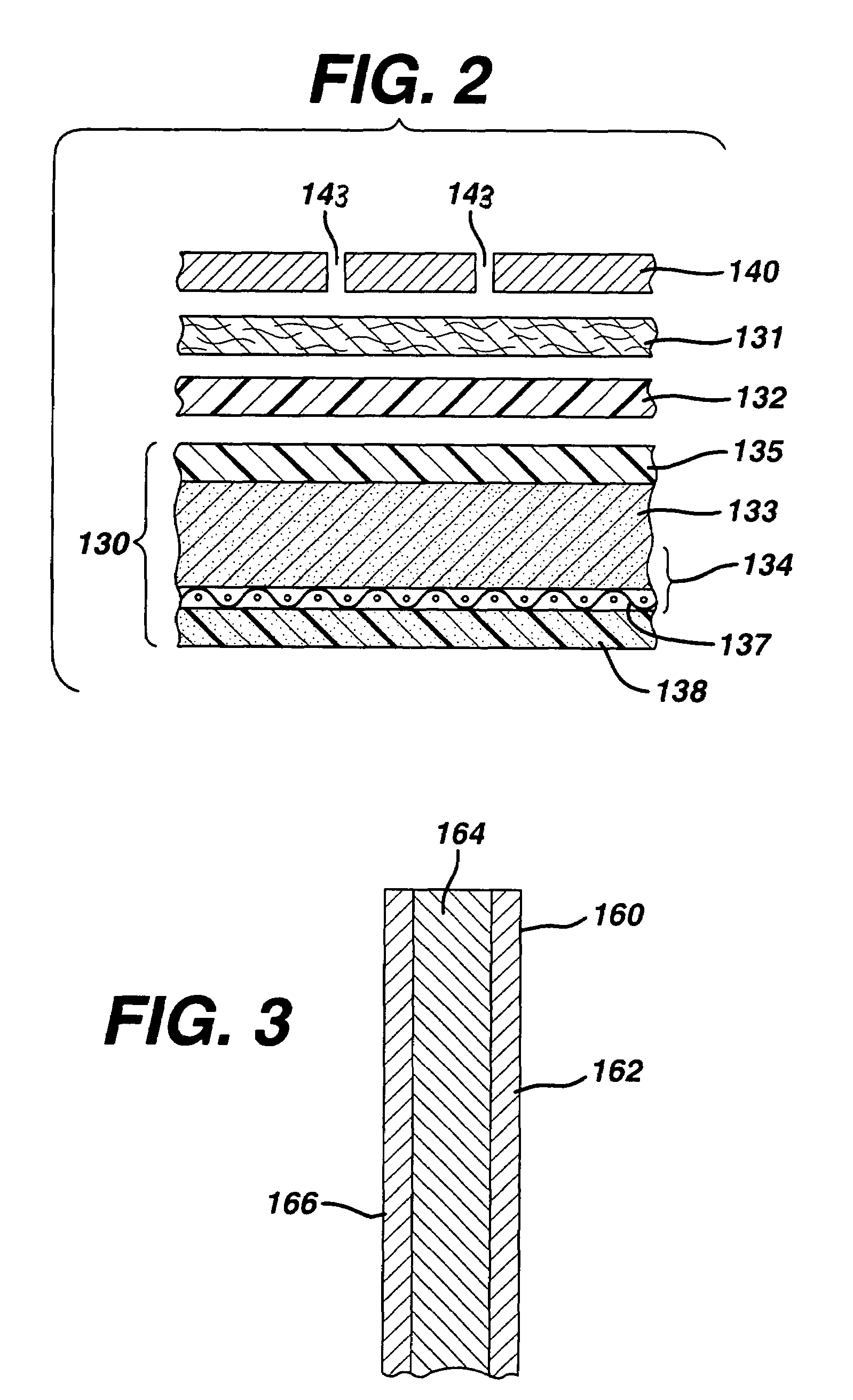Method of forming a nickel layer on the cathode casing for a zinc-air cell
a zinc-air cell and cathode casing technology, applied in the direction of cell components, jackets/cases materials, liquid/solution decomposition chemical coatings, etc., can solve the problems of reducing cell performance, reducing the possibility of electrolyte leakage, damage or destroy the hearing aid or other electronic component being powered, etc., to achieve soften the nickel surface and improve the contact area. the effect of reliability
- Summary
- Abstract
- Description
- Claims
- Application Information
AI Technical Summary
Benefits of technology
Problems solved by technology
Method used
Image
Examples
example 1
[0037]A control zinc-air cell 100 was prepared in accordance with the methods described herein using conventional anode and cathode materials and cell components as described herein. The chemical compositions of anode and cathode, cell components, and details of cell assembly are described in the ensuing description of the appearing after this example. The anode comprised 3 Wt. % mercury which was amalgamated with the zinc. However, the same improvement obtained with softening the nickel layer at the terminal contact area 144 is independent of adding mercury to the anode. The anode casing was of triclad material (i.e. stainless steel cladded on the outside surface with nickel and on the inside surface with copper). The cathode casing 140 was formed of a cold rolled metal substrate 145 of about 4 mil (0.102 mm) drawn into the general shape shown in FIG. 1. The metal substrate 145 forming cathode casing 140 was then subjected to conventional electroless plating wherein a layer of nick...
PUM
| Property | Measurement | Unit |
|---|---|---|
| temperature | aaaaa | aaaaa |
| temperature | aaaaa | aaaaa |
| height | aaaaa | aaaaa |
Abstract
Description
Claims
Application Information
 Login to View More
Login to View More - R&D
- Intellectual Property
- Life Sciences
- Materials
- Tech Scout
- Unparalleled Data Quality
- Higher Quality Content
- 60% Fewer Hallucinations
Browse by: Latest US Patents, China's latest patents, Technical Efficacy Thesaurus, Application Domain, Technology Topic, Popular Technical Reports.
© 2025 PatSnap. All rights reserved.Legal|Privacy policy|Modern Slavery Act Transparency Statement|Sitemap|About US| Contact US: help@patsnap.com



